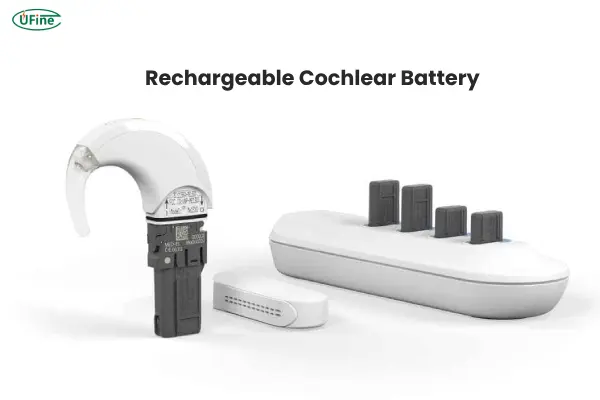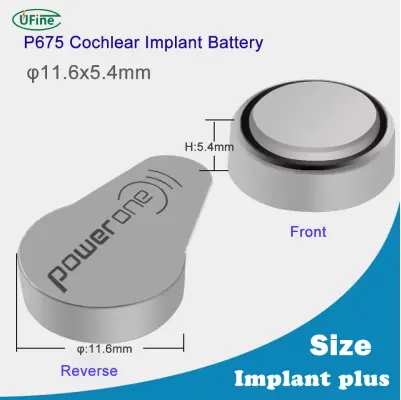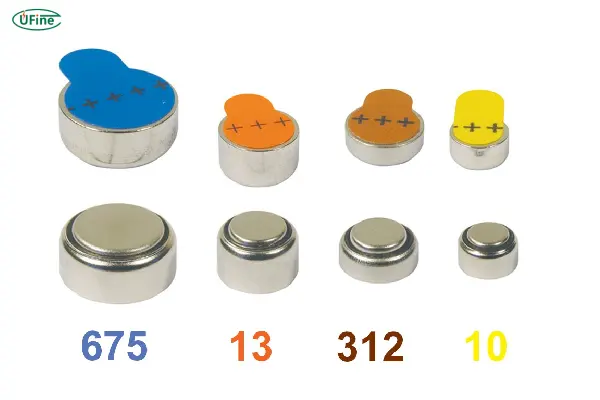
- Part 1. How does the battery affect the performance of a cochlear implant?
- Part 2. Cochlear battery chemical types
- Part 3. Rechargeable vs. non-rechargeable cochlear batteries
- Part 4. What batteries should I get?
- Part 5. Cochlear battery size
- Part 6. Cochlear battery voltage
- Part 7. How much power is enough power?
- Part 8. How long does a cochlear battery last?
- Part 9. Signs your cochlear battery is dying
- Part 10. Cochlear battery charging tips
- Part 11. Cochlear battery replacement
- Part 12. Final thoughts
- Part 13. FAQs
For over 700,000 people worldwide living with cochlear implants, these remarkable devices are far more than medical equipment—they’re bridges to the world of sound. But what keeps this bridge standing strong? The often-overlooked cochlear battery—a small but mighty power source that makes hearing possible.
In this in-depth guide, we’ll explore how cochlear batteries work, what types are available, and which options best support your daily life. Whether you’re new to implants or a long-time user, this article offers the clarity and practical knowledge you need to stay powered up and worry-free.
Part 1. How does the battery affect the performance of a cochlear implant?
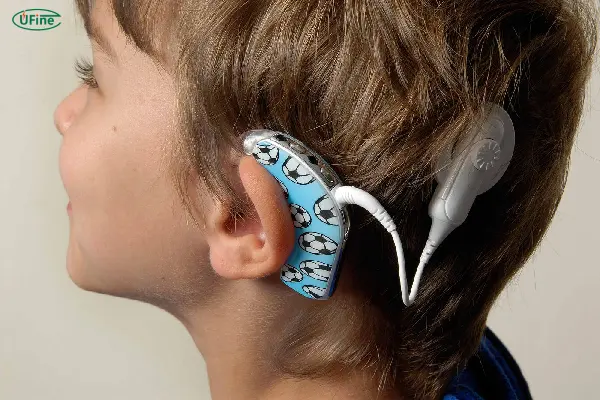
Think of the battery as the heart of your cochlear implant system. It supplies continuous power to the microphone, sound processor, and internal implant that stimulate your auditory nerve.
A strong battery ensures consistent sound quality, smooth signal transmission, and all-day reliability. A weak battery, on the other hand, can cause:
-
Unexpected shutdowns
-
Gaps in sound
-
Intermittent static
-
Inability to power the device at all
In short, if the battery fails, your hearing fails. That’s why performance, capacity, and dependability should be top priorities.
Part 2. Cochlear battery chemical types
Not all batteries are created equal. Cochlear implants require high-efficiency batteries that are both compact and safe. Here are the most common chemical types used today:
Zinc-Air Batteries
These are the most widely used non-rechargeable batteries. They activate when exposed to air, making them lightweight and energy-dense. Popular in size 675 format.
Lithium-Ion (Li-ion) Batteries
Used in rechargeable systems. They offer high capacity, good energy density, and multiple hours of use. They are built into many cochlear implant systems with custom charging docks.
Silver-Zinc Batteries
Less common, but offer high power in small packaging. Often used in research or specialty models.
Nickel-Metal Hydride (NiMH)
An older rechargeable option that’s mostly been replaced by lithium-ion technology.
For advanced or custom hearing solutions, Ufine Battery offers a wide range of lithium battery chemistries—including lithium polymer, LiFePO4, high-rate, and high-temperature cells. These are ideal for custom-fit or OEM cochlear battery systems.
To explore precision battery solutions, contact Ufine Battery.
Part 3. Rechargeable vs. non-rechargeable cochlear batteries
Choosing between rechargeable and disposable batteries often depends on your lifestyle. Let’s break it down:
Rechargeable Batteries
Advantages:
-
Lower long-term cost
-
Environmentally friendly
-
Fewer battery changes
Drawbacks:
-
Must be charged daily
-
Degrades over 1–3 years
-
May require emergency backup
Non-Rechargeable Batteries
Advantages:
-
Reliable and easy to use
-
Perfect for travel or emergencies
-
Long shelf life
Drawbacks:
-
Higher ongoing cost
-
Less eco-friendly
-
Requires carrying spares
Many users actually prefer to use both. Rechargeable for daily life, and disposables for travel or backup.
Part 4. What batteries should I get?
Each cochlear implant brand has different recommendations. Here’s a general guide:
-
Cochlear Nucleus: Size 675 zinc-air or Cochlear-branded rechargeable units
-
Advanced Bionics: Lithium-ion rechargeable battery packs
-
MED-EL: Rechargeable or standard zinc-air (depending on the model)
Always follow your device’s manual. Incorrect battery use can damage your device, affect performance, and void warranties.
Part 5. Cochlear battery size
Battery size affects both power and comfort. The standard non-rechargeable battery for cochlear devices is:
-
Size 675 (Zinc-Air)
| Size | Dimensions | Typical Capacity | Best For |
|---|---|---|---|
| 10 | 5.8mm × 3.6mm | 50mAh | Compact processors |
| 312 | 7.9mm × 3.6mm | 180mAh | Most BTE devices |
| 13 | 7.9mm × 5.4mm | 310mAh | Power users |
Ergonomic Considerations:
Larger batteries may affect processor comfort and microphone placement
Rechargeable options are often brand-specific custom battery packs. While larger than hearing aid batteries, cochlear batteries are still discreet and lightweight.
Part 6. Cochlear battery voltage
Voltage must remain stable throughout the battery’s life. Typical values:
-
Zinc-Air: ~1.4 volts
-
Rechargeable Lithium-Ion: ~3.7 volts
High-quality batteries from trusted suppliers like Ufine Battery offer consistent voltage output, preventing audio glitches and signal drops.
If you’re developing advanced hearing technology, Ufine Battery can custom-design solutions with stable voltage profiles.
Part 7. How much power is enough power?
The right amount of power depends on:
-
Your daily usage time (8 to 16+ hours)
-
The model of your cochlear processor
-
How noisy your environment is
Busy processors in loud places consume more power. Children, who may wear their processors longer, often require high-capacity batteries. If you’re unsure, aim for a battery with a little more power than you think you’ll need.
Part 8. How long does a cochlear battery last?
Here’s a closer look at battery lifespan:
-
Zinc-Air (size 675): 2 to 5 days per battery
-
Lithium-Ion Rechargeable: 8 to 30 hours per charge
-
Rechargeable battery life cycle: 1 to 3 years (depending on use)
Battery life depends on many factors like processor settings, environmental noise, and streaming features. The more your processor works, the faster your battery drains.
Part 9. Signs your cochlear battery is dying
Be alert to these warning signs:
-
Sudden silence or shutdown
-
Audio cutting in and out
-
Frequent battery changes
-
Lights or indicators flashing red
-
A sluggish or delayed startup
When these signs appear regularly, it’s time to replace your battery or recharge more often.
Part 10. Cochlear battery charging tips
To get the most out of your rechargeable battery:
-
Always use the charger that came with your device
-
Avoid charging in extreme heat or cold
-
Remove the battery once it’s fully charged
-
Store backup batteries at room temperature
Like all batteries, lithium-ion cells degrade over time. Proper charging extends their lifespan.
Part 11. Cochlear battery replacement
Replacing a cochlear battery is easy once you know your model. General tips:
-
Use the correct size and voltage
-
Follow manufacturer guidelines
-
For rechargeable batteries, expect to replace every 12 to 36 months
Reliable suppliers matter here. Ufine Battery specializes in custom lithium batteries tailored to device specs—size, voltage, discharge rate, and more.
Whether you’re a manufacturer or user looking for high-quality alternatives, Ufine can deliver the right battery with consistent performance and safety built-in.
Reach out to Ufine Battery for custom solutions that match your cochlear device perfectly.
Part 12. Final thoughts
Your cochlear battery is more than just a power source—it’s the gateway to connection, conversation, and confidence.
Choosing the right type, size, and voltage ensures your implant runs smoothly from morning until night. And when you need a reliable battery provider, whether for a replacement or a custom medical device, Ufine Battery is a name you can count on.
We manufacture and customize a wide range of lithium batteries, including:
-
Lithium polymer
-
LiFePO4
-
18650 and cylindrical cells
-
Ultra-thin, high-rate, and high-temperature designs
From size and voltage to lifespan and safety, Ufine has the expertise to power your hearing with precision.
Contact Ufine Battery today to build a battery solution you can trust—because hearing clearly should never be uncertain.
Part 13. FAQs
Can I use hearing aid batteries for a cochlear implant?
No. Cochlear implants require more power. Use size 675 or the recommended rechargeable packs.
How long does a rechargeable battery last per charge?
8 to 30 hours, depending on usage and model.
How do I know when to replace my battery?
When runtime shortens significantly or sound issues begin appearing.
Are rechargeable batteries better than disposable?
Depends on your lifestyle. Rechargeables are eco-friendly; disposables offer simplicity.
Can I fly with cochlear batteries?
Yes. Keep spares in carry-on luggage. Inform airport security as needed.
Related Tags:
More Articles
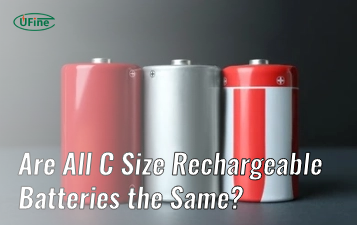
Are All C Size Rechargeable Batteries the Same?
Compare rechargeable C cell batteries by type, voltage, capacity, and lifespan. Find the best C batteries for toys, flashlights, and emergency devices.
Learn how to safely recharge 18650 batteries, choose the best 18650 battery charger, and extend battery life with expert tips and practical strategies.
12 Volt Batteries: How Long Can They Really Last?
Discover the real lifespan of 12V batteries. Compare lead-acid, AGM, gel, and lithium (LiFePO₄) batteries — and find out why LiFePO₄ lasts over 10 years.
Lithium-ion vs Lithium Polymer Battery: Which is Better?
Compare Li-ion and LiPo batteries in energy, safety, lifespan, and uses. Learn which battery is best for drones, laptops, and wearables.
Power Pack Battery vs. Power Bank: What’s the Difference?
Compare power pack battery and power bank: capacity, devices, portability, and best uses to pick the right portable battery pack.
